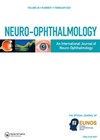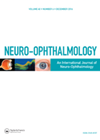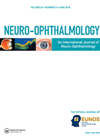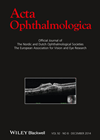
Journal Reviews
Sub-clinical detection methods in multiple sclerosis
Visually symptomatic multiple sclerosis (MS) provides only part of the required information to assist in understanding the disease. Recently, researchers have concentrated their efforts on diagnosing MS cases in the subclinical period. The aim of this paper was to assess...
Retinal traction during ERM peeling
This prospective study aimed to quantify the retinal thickening induced by epiretinal membrane (ERM) peeling and to correlate this thickening with postoperative retinal function. Twenty-five patients who required surgery for idiopathic ERM were included in the study. The authors performed...
Cataract extraction and microperimetry
In this study, the authors assessed retinal sensitivity before and after cataract extraction, in an effort to understand how lens opacities may affect microperimetry results in glaucoma and macular diseases. Thirty patients awaiting cataract extraction were examined and their lens...
A novel test for unilateral functional visual loss
The authors report results of three cases of functional visual loss, where regular ophthalmic testing was not sufficient to confirm the diagnosis. In these cases, bilateral concurrent eye examination was performed using a head-mounted perimeter (imo), to facilitate the diagnosis....
Selection of visual field test for detection of pituitary disease
This prospective cross-sectional diagnostic accuracy study compared Octopus semi-automated kinetic perimetry (SKP) and Humphrey static automated central perimetry for detection of neurological visual field loss in patients with pituitary disease. Humphrey central 30-2 SITA threshold programme results were compared with...
Functional visual field loss using automated static perimetry
Functional visual field loss is traditionally assessed by kinetic perimetry, typically producing spiralling isopters. This study looked at the spatial distributions of functional field deficits using automated static perimetry. A retrospective review of automated perimetry records was conducted using a...









